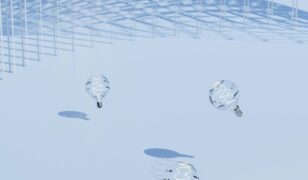USSOCOM invites industry to S&T Directorate Virtual Symposium
 On April 10, the United States Special Operations Command posted an invitation to USSOCOM Science and Technology Directorate Virtual Symposium and Soft Hard Problems.
On April 10, the United States Special Operations Command posted an invitation to USSOCOM Science and Technology Directorate Virtual Symposium and Soft Hard Problems.
The USSOCOM Science and Technology (S&T) Directorate is offering an online “Virtual Symposium.” The purpose of this symposium is to provide information to interested parties with the potential to address the specific areas of interest described below. The online Symposium will be available beginning 16 April 2018 and will feature presentations that address critical technology focus areas that the USSOCOM S&T Directorate intends to pursue in FY19. A Virtual Symposium link for questions and answers will also be included. Upon registering for access to the symposium, directions will be provided regarding the questions and answers process.
The S&T Directorate’s vision is to “Discover, enable, and transition disruptive technologies to provide an asymmetric advantage for Special Operations Forces (SOF).” S&T efforts are aligned to provide linkage between technology discovery, full spectrum S&T support and SOF material acquisition efforts.
USSOCOM S&T seeks to initiate technology development now that will be ready for use in the field within 5-7 years, based on what the Future Operating Environment will potentially look like, and what challenges it will present. The virtual symposium will present the expected Future Operating Environment in order to place our development objectives within the appropriate context.
The Directorate has identified the need for a broad array of integrated, innovative and disruptive capabilities in the following challenge areas:
Next Generation Identification and Characterization: USSOCOM must be able to identify and characterize in a near-peer, contested environment, without airborne Intelligence, Surveillance and Reconnaissance assets.
Strategic and Tactical Signature Management: USSOCOM must be able to reduce, obscure, modify or eliminate all observable signature to avoid compromise on deployment, infiltration, and actions on the objective.
Contested Environment Situational Awareness: USSOCOM must be able to leverage emerging technology to visualize, understand and surveil complex urban and subterranean environments.
Countering Autonomous Systems: USSOCOM must be able to anticipate how adversaries will employ autonomous systems and identify technology and develop Tactics, Techniques and Procedures to defeat and exploit these systems, or mitigate their tactical advantages.
Tactical Communication and Navigation: USSOCOM must be able to communicate and navigate in a contested electromagnetic spectrum, without the use of United States Government (USG) satellites.
Tactical Remote or Autonomous systems and the Human Machine Interface: USSOCOM must be able to identify tasks where unmanned system performance can exceed human capabilities and seamlessly integrate visualization and control functions to expand and enhance an individual operator’s situational awareness and lethality on the battlefield.
Full information is available here.
Source: FedBizOpps








